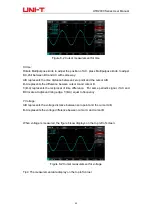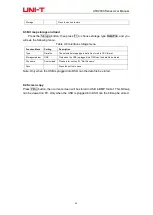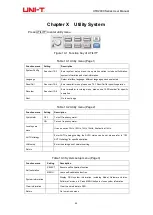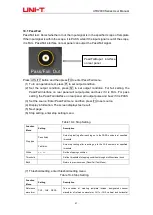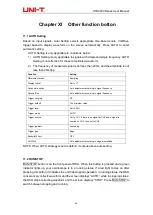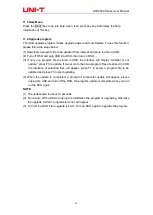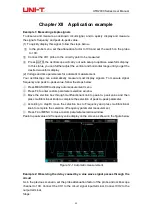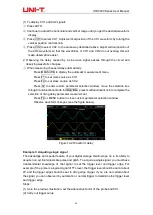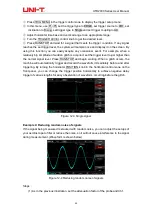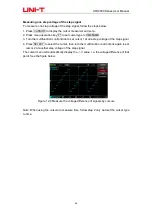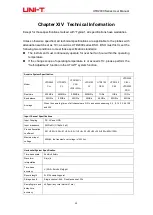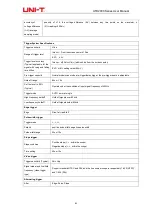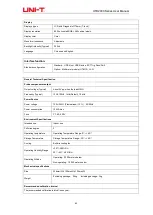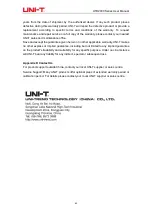
UTD2000 Series User Manual
55
(2) Connect the signal to ensure stable display of waveform.
(3) Improving trigger by setting trigger coupling.
①
Press TRIG MENU in the trigger zone to display the trigger
setup menu.
②
Set trigger coupling to Low Frequency Holdoff or High Frequency Holdoff.
Low
frequency holdoff is seting up a high-pass filter. It filters low frequency signal
component under
80kHz and allows high frequency signal component to pass
through.
High frequency holdoff is setting up a low-pass filter. It filters high frequency signal
component
over 80kHz and allows low frequency signal component
to pass through.
By setting Low Frequency Holdoff or High Frequency Holdoff,
you can hold off low
frequency or high frequency noise
respectively and achieve a stable trigger.
(4) Reducing display noise by setting the sampling mode.
①
If the signal being measured is stacked with random noise and the waveform is too
coarse as a result, you can use the
average sampling mode to eliminate random noise
display and reduce the size of waveform for easy observation and
measurement. After
getting the mean, random noise is
reduced and details of the signal are clearer. Follow
the steps
below:
Press ACQUIRE in the menu zone of the front panel to
display the sampling setup
menu. Press F1 to set acquisition mode to AVERAGE, then press F1 to adjust the
average number of
times in multiples of 2, i.e. 2 to 256, until you get the
desired
waveform display that meets observation and
measurement requirements. (See the
figure below)
Figure 12-5 Signal noise held off
Note: In average sampling mode, the waveform display will update at a slower rate.
This is normal.
Example 5: Using the cursors for measurement
Your oscilloscope can measure 28 waveform parameters automatically. All auto
parameters can be measured with the cursors.
By using the cursors, you can quickly measure the time and voltage of a waveform.


